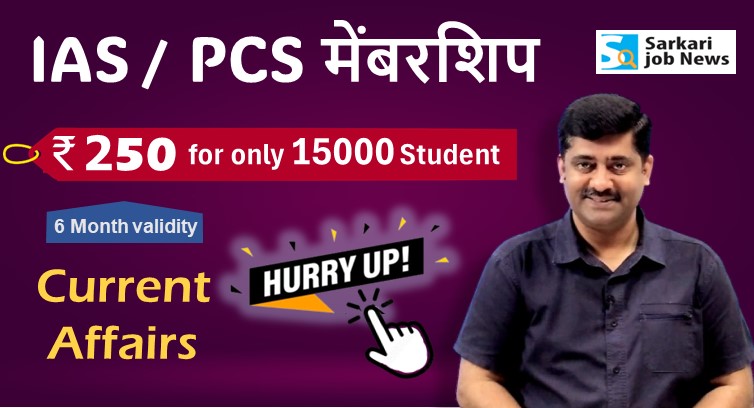This is the current affairs of 12 & 13 March 2024. Here are questions and answers of daily current affairs for better preparation of competitive exams for government jobs.
PDF Download: Click here
1. Who became the new Chief Minister of Haryana?
a. Naib Singh Saini
b. Brijendra Singh
c. Bhupinder Singh Hooda
d. Dushyant Singh Chautala
Answer: a. Naib Singh Saini
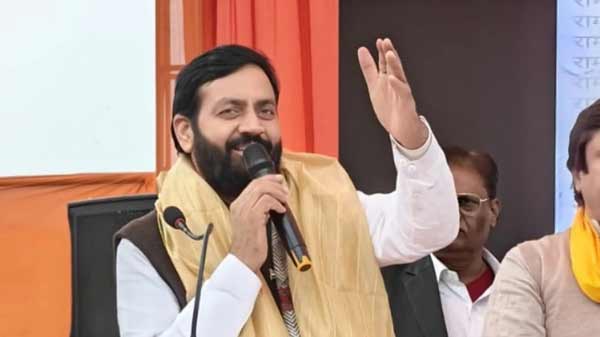
– In Haryana, the incumbent Chief Minister Manohar Lal Khattar resigned. After this, on March 12, 2024, Nayab Singh Saini became the Chief Minister.
– There was a government here with a BJP and JJP coalition, but this coalition broke apart.
Governor of Haryana – Bandaru Dattatreya
—————–
2. The Central Government implemented the Citizenship Amendment Act (CAA) 2019 in March 2024, under which there is a provision to give citizenship to minorities of which countries who have spent five years in India?
a. Pakistan, Bangladesh, Myanmar
b. Pakistan, Bangladesh, Sri Lanka
c. Bangladesh, China, Pakistan
d. Pakistan, Afghanistan, Bangladesh
Answer: d. Pakistan, Afghanistan, Bangladesh
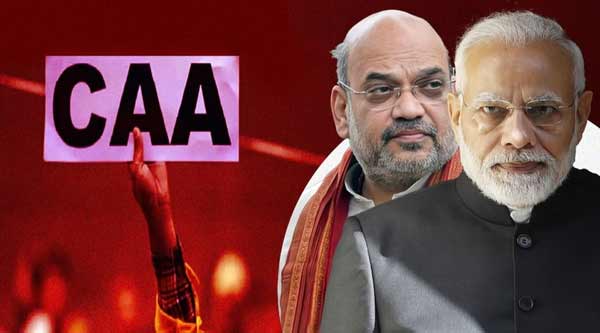
Citizenship Amendment Act (CAA) 2019
– The Citizenship Amendment Bill 2015 was introduced in the Parliament in 2016 for amendments to the Citizenship Act of 1955.
– It was passed in the Lok Sabha on December 10, 2019, and the next day in the Rajya Sabha. As soon as it received the President’s approval on December 12, the CAA became law.
– The Citizenship Act of India 1955 has been amended six times so far (1986, 1992, 2003, 2005, 2015, and 2019).
– On March 11, 2024, the central government issued the notification for the CAA.
Who will be eligible for citizenship?
– Hindus, Sikhs, Buddhists, Jains, Parsis, and Christians who came to India from Pakistan, Afghanistan, and Bangladesh due to religious persecution before December 31, 2014, will be granted citizenship.
– Only minority people from these three countries can apply for citizenship.
How can one apply?
– The application process will be online.
Applicants must specify when they came to India.
– Even if they don’t have a passport or other travel documents, they can still apply.
– Under this, the residency period in India has been kept more than 5 years.
– For other foreigners (Muslims), this period is more than 11 years.
Exemption of tribal areas of four states in the CAA law
– This law exempts tribal areas of Assam, Meghalaya, Mizoram, and Tripura included in the Sixth Schedule of the Constitution.
– It includes Karbi Anglong in Assam, Garo Hills in Meghalaya, Chakma district in Mizoram, and tribal districts in Tripura.
—————
3. What is the speed of India’s fastest and indigenously designed IP/MPLS router, which was launched by Union Minister Ashwini Vaishnav?
a. 1.4 TBPS
b. 2.4 TBPS
c. 3.4 TBPS
d. 4.4 TBPS
Answer: b. 2.4 TBPS
– Central Minister for Communications, Electronics, and Railways Ashwini Vaishnaw launched it in March 2024.
About the Router:
– A router is a device that connects two or more packet-switched networks or subnetworks.
– This domestically designed router was created in collaboration with the government’s Department of Telecommunications, C-DOT, and NIVETTI Systems Private Limited.
– This router is capable of data transfer at a speed of 2.4 terabits per second (Tbps).
– It is an IP/MPLS (Multiprotocol Label Switching) router.
– IP/MPLS (Multiprotocol Label Switching) is a routing technology used in telecommunications networks. It directs traffic from one node to another directly.
– This technology was first developed in 1990. Its aim was to enhance network connectivity.
– The deployment of this router is aimed at assisting in the development of various sectors such as railway communication networks, power grids, telecommunications, and television media.
—————–
—————
4. DRDO conducted the first flight test of the Agni-5 missile in March 2024, using which technology?
a. Independently Vehicle Technology
b. 10 Multiple Independently Vehicle Technology
c. Multiple Independently Targetable Re-entry Vehicle Technology
d. None of these
Answer: c. Multiple Independently Targetable Re-entry Vehicle Technology (MIRV)
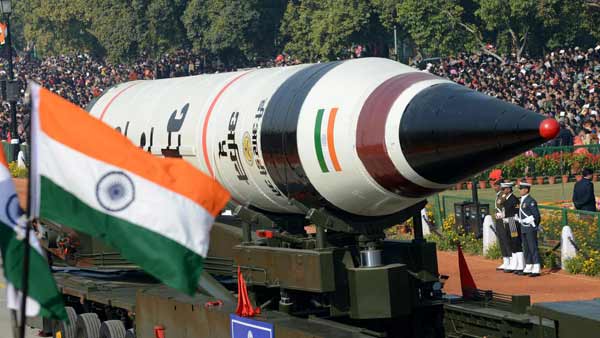
Where was Agni-5 launched from?
– It was launched from Dr. APJ Abdul Kalam Island in Odisha.
– This island was previously known as Wheeler Island.
– Agni-5 is India’s first Intercontinental Ballistic Missile (ICBM).
– An Intercontinental Ballistic Missile is one whose range exceeds 5,000 kilometers.
What is MIRV technology?
– With this technology, a single missile can target multiple objectives located hundreds of kilometers away.
– It is capable of carrying nuclear warheads.
– Its striking range is approximately more than 5,000 kilometers, making it a long-range missile.
– It covers the entire China and half of Europe in its target area.
– Its main objective is primarily to deter China’s challenge.
How does this missile attack?
– It goes up to a height of about 1400 kilometers after launch.
– After that, it re-enters the atmosphere and rapidly descends towards the target due to gravity.
– It attacks at a speed of 29,401 kilometers per hour.
– Tracking it becomes difficult.
– Its speed is 24 times faster than the speed of sound. That is, a distance of 8.16 kilometers in one second.
—————
5. Under which mission DRDO conducted the flight test of Agni 5 missile with Multiple Independently Targetable Re-entry Vehicle (MIRV) technology in March 2024?
a. Mission Agni
b. Mission Divyastra
c. Mission Prithvi
d. Mission Antariksha
Answer: b. Mission Divyastra
– On March 11, 2024, the Defense Research and Development Organization (DRDO) conducted a flight test of the Agni-5 missile with Multiple Independently Targetable Re-entry Vehicle (MIRV) technology.
– This was the first flight test of the Agni-5 missile with MIRV technology.
What is Mission Divyastra?
– It is an indigenous highly advanced weapon system.
– It utilizes Multiple Independently Targetable Re-entry Vehicle (MIRV) technology, enabling a single missile to carry multiple warheads to different locations.
– Warhead refers to the next part of the missile containing explosives.
Difference between Normal and MIRV missiles:
– A normal missile can hit one target.
– A MIRV missile can hit multiple targets simultaneously.
Which countries possess this technology?
– The MIRV technology is possessed by the United States, Russia, China, France, and the United Kingdom. Now India has also joined this league of countries.
– Apart from these countries, Pakistan is also attempting to develop such missile systems.
– According to some reports, Israel also possesses these missile systems.
When was the first test of Agni-5 conducted?
– The first test of Agni-5 was conducted in April 2012.
– Since then, Agni-5 has been tested several times.
– In March 2024, Agni-5 was tested with Multiple Independently Targetable Re-entry Vehicle (MIRV) technology.
– This was the first flight test of Agni-5 missile with this technology.
– Before this, a night test was conducted from APJ Abdul Kalam Island (Odisha) in December 2022.
About Agni-5:
– It is an Intercontinental Ballistic Missile (ICBM) with nuclear capability.
– Its range was initially intended to be 5,000 to over 5,000 kilometers.
– However, in December 2022, DRDO increased the range of Agni-5 missile from 5000 KM to 7000 KM.
– It has been designed by DRDO and is being produced by Bharat Dynamics Limited.
– The control of its use lies with the Strategic Forces Command.
– It can also be launched through submarine.
It is a fire-and-forget missile, meaning fire and forget. After firing, it will hit the target.
How many Agni missiles does India have?
– India has Prithvi-2, Agni-1, Agni-2, Agni-3, – Agni-4, and Agni-5 ballistic missiles.
– Agni missiles have been with India since 1990.
– India also has submarine-launched ballistic missiles.
About DRDO:
– Formation: 1958
– Headquarters: New Delhi
– Chairman: Dr. Satheesh Reddy
—————
6. Name the Chairman of National Scheduled Castes Commission (NCSC)?
a. Lav Kush Kumar
b. Kishor Makwana
c. Rajneesh Kumar
d. Aditya Prakash
Answer: b. Kishor Makwana
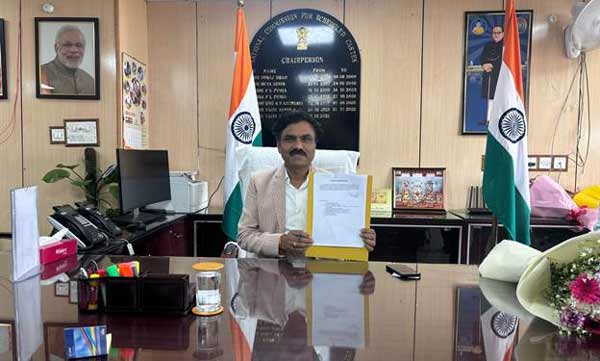
– The appointment of the Chairman of the NCSC Commission is made by the President of India.
– Kishor Makwana took oath as the Chairman of the National Scheduled Castes Commission (NCSC) on March 11, 2024.
– He has written 9 books on Dr. Ambedkar.
– In addition, he has translated and edited many books.
– He is also a journalist and columnist.
National Scheduled Castes Commission (NCSC)
– This is an Indian constitutional body.
– It was established in 2004 with the aim of providing protection against the exploitation of Scheduled Castes and Anglo-Indian communities and promoting their social and educational security.
—————
7. At which place was the joint exercise ‘Bharat Shakti’ of the three armies organized in March 2024?
a. Pokhran (Jaisalmer)
b. Mahajan (Bikaner)
c. Visakhapatnam
d. Bamori (Sagar)
Answer: a. Pokhran (Jaisalmer)
– It is an important tri-service exercise showcasing the lethal capabilities of the Indian Army, Air Force, and Navy.
– During the exercise, all three Indian armed forces demonstrated the capability of domestically produced weapons and platforms.
– Only domestically developed weaponry systems in India were included in this exercise.
These fighter jets and weapons showcased power:
– LCA Tejas, ALH Mk-IV, LCH Rudra, Mobile Anti-Drone System, BMP-II and its variants, Namika (Nag Missile Carrier), T-90 tank, Dhanush, K-9 Vajra, and Pinaka rockets are among the platforms that will be showcased during this period. Other major equipment and weapons participating in the exercise include Dhanush and Sarang Gun Systems, Akash Weapon System, Logistics Drones, Robotic Mules, and a series of unmanned aerial vehicles.
Pokhran:
– In May 1998, India conducted successful nuclear tests one after another in the remote desert region of Pokhran, Rajasthan. With this, India established itself as a nuclear power on the global stage.
– The second nuclear test conducted in Pokhran was named Operation Shakti.
– The first test was conducted in May 1974 during the Indira Gandhi government. Its code name was Smiling Buddha.
Rajasthan:
Capital – Jaipur
Chief Minister – Bhajan Lal Sharma
—————-
8. Which fighter aircraft involved in the Bharat Shakti exercise crashed on March 12, 2024?
a. MiG-21
b. Rafale
c. Tejas
d. Mirage
Answer: c. Tejas
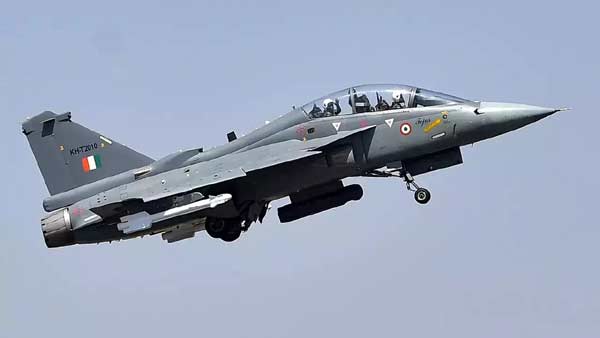
– The Tejas fighter jet crashed during the Indian Power War Exercise.
– On the afternoon of March 12, 2024, around 2 o’clock, it crashed near a hostel of the Bhil community, about 2 kilometers from the city.
– The hostel was empty at the time of the incident, so there wasn’t much damage.
– This incident occurred about 100 kilometers away from the ongoing war exercise site in Pokhran.
– Prime Minister Narendra Modi, Defense Minister Rajnath Singh, and other leaders along with senior army officers are present at this event.
– Air Force officials said – there was only one pilot in the fighter plane. He has been sent to the Army Hospital. He had exited before the crash. After the sudden explosions, panic spread throughout the area.
——————
—————
9. When was the World Kidney Day observed in the year 2024?
a. 9 March
b. 10 March
c. 11 March
d. 14 March
Answer: b. 14 March
Theme of 2024:
– Kidney Health for All – Advancing equitable access to care and optimal medication practice
– World Kidney Day is celebrated every year on the second Thursday of March.
– In the year 2024, this day was observed on March 14th.
– The initiative to celebrate this day was taken by the International Society of Nephrology and the International Federation of Kidney Foundations in the year 2006.
– Kidneys are one of the most vital organs of the body. You would be surprised to know that this small organ filters one-fourth of the blood every day, meaning it cleans it.
– In addition, the kidneys work to remove excess water, fluids, and harmful substances from the body.
—————-
10. Under which scheme, Home Minister Amit Shah inaugurated PNG facilities in 41 villages of Delhi and development projects in 178 villages?
a. Dilli Vikas Abhiyan
b. Dilli Gramodaya Abhiyan
c. Dilli Gramin Vikas Abhiyan
d. None of these
Answer: b. Dilli Gramodaya Abhiyan
– The Dilli Gramodaya Abhiyan Yojana has a fund of 960 crore rupees for the development of essential basic infrastructure in urbanized villages and new urban areas of Delhi.
PDF Download: Click here



